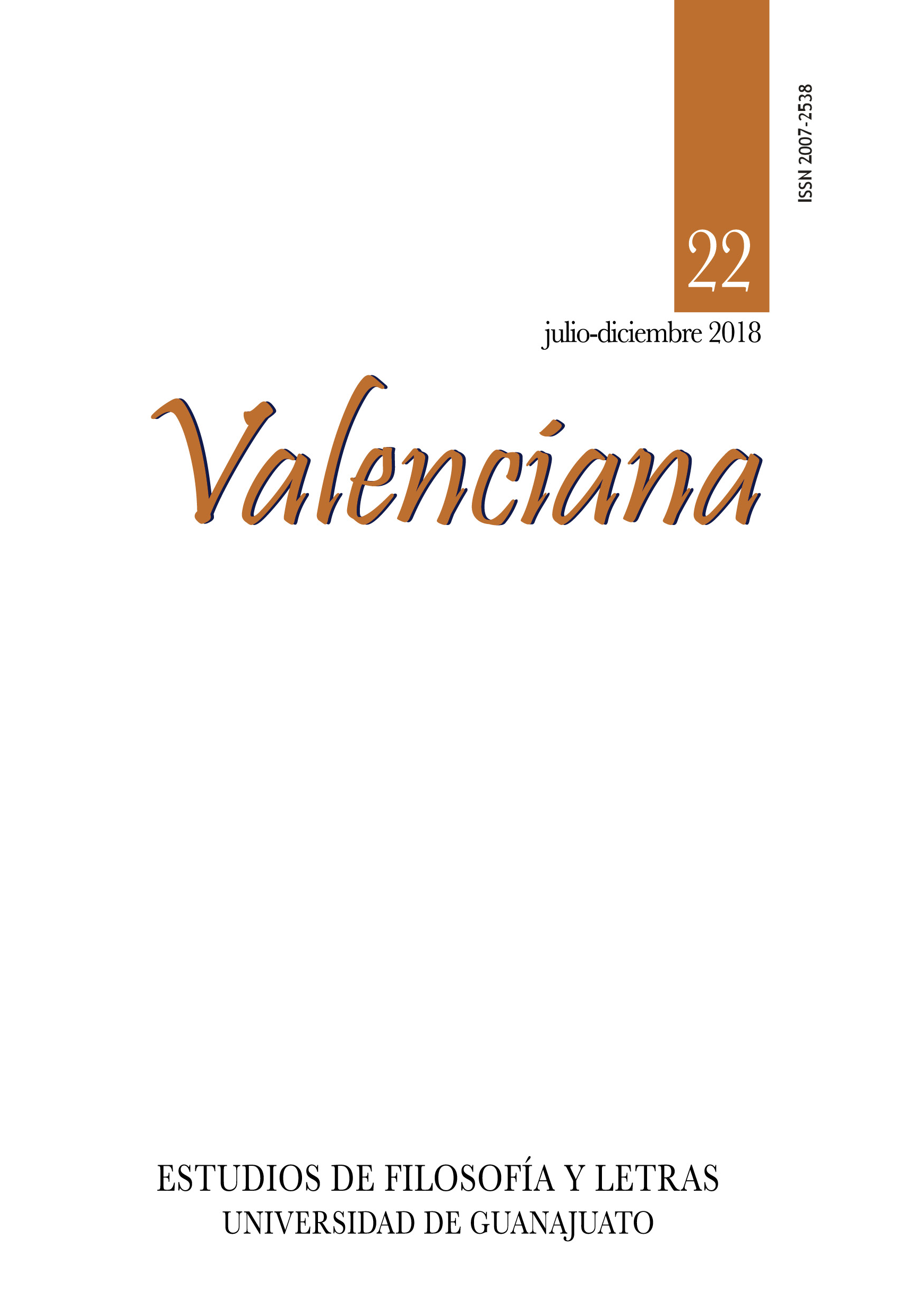Memory as world configuration in El Reino de Celama, by Luis Mateo Diez
DOI:
https://doi.org/10.15174/rv.v0i22.379Abstract
In the present work, a close look is taken of Luis Mateo Díez novel, El reino de Celama, in order to observe the role memory plays in its configuration. The three novels that comprise El reino... (El espíritu del páramo, La ruina del cielo and El oscurecer) are analyzed, taking into account the constant presence of oral literature in the writing, the fragmentation of the story, the remembrance and, obviously, the memory. Other investigators’ theories, as well as Díez’ own metaliterary and literary reflections, allow the functioning of the memory in this novel to settle. With the same intention, there are approximations to other works that are configured in a similar manner, since the mirroring of spaces, functions and characters also shed light on the the concept that is analyzed here as configurer of the world.References
Aínsa, Fernando, 2005, “Lugares de la memoria”, Hispamérica, año 34, núm. 100, abril, pp. 19-33.
Alí, María Alejandra, 2006, “La casa de la memoria”, Nueva Revista de Filología Hispánica, vol. 54, núm. 2, pp. 523-556.
Alonso, Santos, 1986, Literatura leonesa actual. Estudio y antología de 17 escritores, Consejería de Educación y Cultura, Junta de Castilla y León.
Álvarez Méndez, Natalia, 2003, “Desde la otra orilla de la existencia, con José María Merino, al espacio mítico de la vida, con Luis Mateo Díez”, Exemplaria, núm. 7, pp. 221-238.
Auge, Marc, 1998, Las formas del olvido, Gedisa, París, 110 pp.
Benet, Juan, 2004, Volverás a Región, Ediciones Destino, España, 235 pp.
Brizuela, Mabel, 2003, “Las fabulaciones de nuestra realidad. Apuntes para una poética del grupo leonés de J. P. Aparicio, L. M. Díez y J. M. Merino”, Olivar, Año 4, núm. 4, pp. 147-157.
Castañeda Hernández, María del Carmen, 2011, “Literatura y memoria”, Hipertexto, núm. 14, pp. 148-154.
Cohen, Sandro, 2010, “Prólogo”, en Edgar Lee Masters, Antología de la Antología de Spoon River, UNAM, Material de Lectura, Poesía Moderna, núm. 79, México, pp. 3-5.
Domínguez Rodríguez, Miguel, Luis Mateo Díez y José María Merino, 1980, “Una introducción a la literatura popular leonesa”, Tierras de León, año XX, núm. 38, marzo, pp. 38-77.
Mateo Díez, Luis, 2001, Discurso de entrada a la Real Academia Española de la Lengua, Madrid, 20 de mayo, 21 pp.
_____, 2005, El reino de Celama, Debolsillo, Barcelona, p. 687.
Pardo Gracia, María Ángel, 2012, “El secreto como técnica de construcción del personaje en Luis Mateo Díez”, Iberic@l, núm. 1, pp. 51-62.
Ricoeur, Paul, 1999, La lectura del tiempo pasado: memoria y olvido, Universidad Autónoma de Madrid, Arrecife, España.
Rulfo, Juan, 1987, Obras, FCE, Lecturas mexicanas, México, 1987, 340 pp.
Sanz Villanueva, Santos, 2003, “En la provincia de Luis Mateo Díez”, en Historia y crítica de la literatura española, al cuidado de Francisco Rico, t. IX, Crítica, Barcelona, pp. 335-341.
Serrano Asenjo, José Enrique, et. al., 2003, “La fantasía torturada: Javier Tomeo, Luis Mateo Díez y José María Merino”, en Historia y crítica de la literatura española, t. IX, Crítica, Barcelona, pp. 365-377.
Zamora, Margarita, 1995, “América y el arte de la memoria”, Revista de Crítica Literaria Latinoamericana, año XXI, núm. 41, Lima-Berkeley, 1er. Semestre, pp. 135-148.
Published
How to Cite
Issue
Section
License
Author(s) who publish in this journal do accept the next conditions:
According to copyright regulations, Valenciana does recognize and respect the authors’ moral right, as well as the right of property, which will be assigned to the journal for its diffusion in open access.
Valenciana does not charge authors for the submission, editorial process or publication in the journal.
All texts published and distributed by Valenciana (without exception) are supported by the license Creative Commons Attribution-NonCommercial 4.0 International (CC BY-NC 4.0), which allows third parties to use the publication as long as they mention the author and the first publication.
Authors can make other independent and additional contractual agreements for the non-exclusive use of his article published in Valenciana (e.g. including it in an institutional repository or in printed/electronic media), as long as it is explicitly clarified that the article was published for the first time in this journal.
For these purposes, authors must sign and send the letter of submission and copyright transfer form in a PDF file to this email address: revistavalenciana@gmail.com
This journal is under a license by Creative Commons Atribución-NoComercial-SinDerivadas 4.0 Internacional (CC BY-NC-ND 4.0)).











